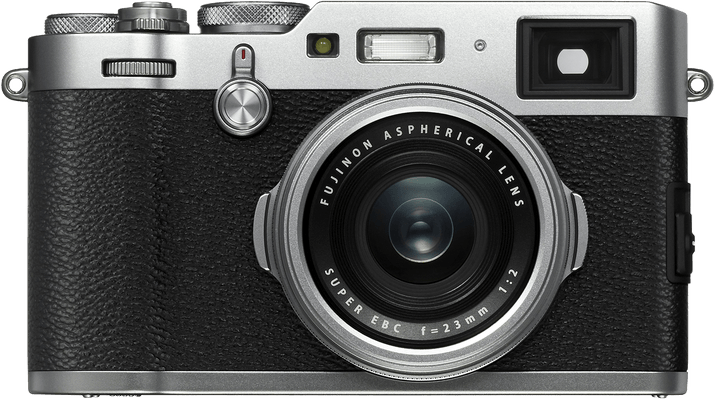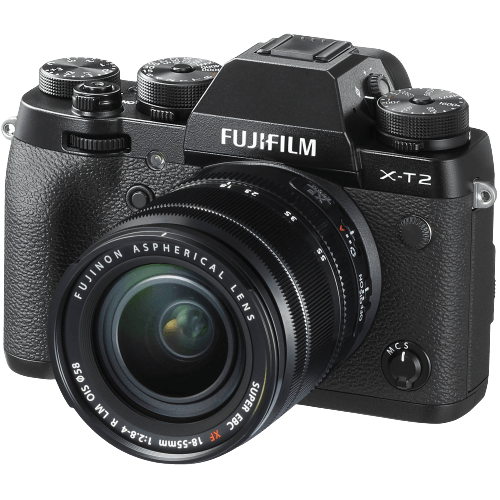Canon 1D C
Canon EOS 1D Mark II N
Canon EOS 1D Mark III
Canon EOS 1D Mark IV
Canon EOS 1D X
Canon EOS 1D X Mark II
Canon EOS 1D X Mark III
Canon EOS 1Ds Mark III
Canon EOS 30D
Canon EOS 40D
Canon EOS 50D
Canon EOS 5D
Canon EOS 5D Mark II
Canon EOS 5D Mark III
Canon EOS 5D Mark IV
Canon EOS 5DS
Canon EOS 5DS R
Canon EOS 60D
Canon EOS 6D
Canon EOS 6D Mark II
Canon EOS 70D
Canon EOS 77D
Canon EOS 7D
Canon EOS 7D Mark II
Canon EOS 80D
Canon EOS 90D
Canon EOS M
Canon EOS M10
Canon EOS M100
Canon EOS M2
Canon EOS M200
Canon EOS M3
Canon EOS M5
Canon EOS M50
Canon EOS M50 Mark II
Canon EOS M6
Canon EOS M6 Mark II
Canon EOS R
Canon EOS R10
Canon EOS R100
Canon EOS R3
Canon EOS R5
Canon EOS R5 C
Canon EOS R50
Canon EOS R6
Canon EOS R6 Mark II
Canon EOS R7
Canon EOS R8
Canon EOS Rebel SL1 / 100D
Canon EOS Rebel SL2 / 200D
Canon EOS Rebel SL3 / 250D
Canon EOS Rebel T100 / 4000D
Canon EOS Rebel T1i / 500D
Canon EOS Rebel T2i / 550D
Canon EOS Rebel T3 / 1100D
Canon EOS Rebel T3i / 600D
Canon EOS Rebel T4i / 650D
Canon EOS Rebel T5 / 1200D
Canon EOS Rebel T5i / 700D
Canon EOS Rebel T6 / 1300D
Canon EOS Rebel T6i / 750D
Canon EOS Rebel T6s / 760D
Canon EOS Rebel T7 / 2000D
Canon EOS Rebel T7i / 800D
Canon EOS Rebel T8i / 850D
Canon EOS Rebel XS / 1000D
Canon EOS Rebel XSi / 450D
Canon EOS Rebel XT / 350D
Canon EOS Rebel XTi / 400D
Canon EOS RP
Canon IXUS 185
Canon PowerShot ELPH 180
Canon PowerShot ELPH 190 IS
Canon PowerShot G1 X Mark III
Canon PowerShot G3 X
Canon PowerShot G5 X Mark II
Canon PowerShot G7 X Mark II
Canon PowerShot G7 X Mark III
Canon PowerShot SX430
Canon PowerShot SX540 HS
Canon PowerShot SX620 HS
Canon PowerShot SX70 HS
Canon PowerShot SX740 HS
Fujifilm FinePix S5 Pro
Fujifilm FinePix X100
Fujifilm FinePix XP140
Fujifilm GFX 50R
Fujifilm GFX 50S
Fujifilm GFX 50S II
Fujifilm GFX100 II
Fujifilm GFX100S
Fujifilm X-A10
Fujifilm X-A2
Fujifilm X-A3
Fujifilm X-A5
Fujifilm X-A7
Fujifilm X-E3
Fujifilm X-E4
Fujifilm X-H1
Fujifilm X-H2
Fujifilm X-H2S
Fujifilm X-M1
Fujifilm X-Pro3
Fujifilm X-S10
Fujifilm X-S20
Fujifilm X-T100
Fujifilm X-T2
Fujifilm X-T20
Fujifilm X-T200
Fujifilm X-T3
Fujifilm X-T30
Fujifilm X-T30 II
Fujifilm X-T4
Fujifilm X-T5
Fujifilm X100F
Fujifilm X100T
Fujifilm X100V
Fujifilm X70
Hasselblad 907X 50c
Hasselblad H3DII 39
Hasselblad H3DII 50
Hasselblad H6D-100C
Hasselblad X1D 50c
Hasselblad X1D II 50c
Hasselblad X2D 100C
Leica CL
Leica D-Lux 7
Leica M Typ 240
Leica M-E Typ 220
Leica M10
Leica M11
Leica M8
Leica M9
Leica M9 P
Leica Q Typ 116
Leica Q2
Leica S
Leica S3
Leica SL Typ 601
Leica SL2
Leica SL2-S
Leica T
Leica TL
Leica TL2
Leica V-Lux 5
Leica X Vario
Nikon Coolpix A
Nikon Coolpix A10
Nikon Coolpix A1000
Nikon Coolpix B500
Nikon Coolpix P1000
Nikon Coolpix P900
Nikon Coolpix P950
Nikon Coolpix S9900
Nikon CoolPix W150
Nikon D200
Nikon D2Xs
Nikon D3
Nikon D300
Nikon D3000
Nikon D300s
Nikon D3100
Nikon D3200
Nikon D3300
Nikon D3400
Nikon D3500
Nikon D3s
Nikon D3X
Nikon D4
Nikon D40
Nikon D40X
Nikon D4s
Nikon D5
Nikon D50
Nikon D500
Nikon D5000
Nikon D5100
Nikon D5200
Nikon D5300
Nikon D5500
Nikon D5600
Nikon D6
Nikon D60
Nikon D600
Nikon D610
Nikon D700
Nikon D7000
Nikon D70s
Nikon D7100
Nikon D7200
Nikon D750
Nikon D7500
Nikon D780
Nikon D80
Nikon D800
Nikon D800E
Nikon D810
Nikon D850
Nikon D90
Nikon Df
Nikon W300
Nikon Z f
Nikon Z fc
Nikon Z30
Nikon Z5
Nikon Z50
Nikon Z6
Nikon Z6 II
Nikon Z7
Nikon Z7 II
Nikon Z8
Nikon Z9
Olympus E3
Olympus E30
Olympus E410
Olympus E420
Olympus E450
Olympus E5
Olympus E510
Olympus E520
Olympus E600
Olympus E620
Olympus OM System OM-1
Olympus OM System OM-5
Olympus OM System Tough TG-7
Olympus OM-D E-M1
Olympus OM-D E-M1 Mark II
Olympus OM-D E-M1 Mark III
Olympus OM-D E-M10
Olympus OM-D E-M10 Mark II
Olympus OM-D E-M10 Mark III
Olympus OM-D E-M10 Mark IV
Olympus OM-D E-M1X
Olympus OM-D E-M5
Olympus OM-D E-M5 Mark II
Olympus OM-D E-M5 Mark III
Olympus PEN E-P1
Olympus PEN E-P2
Olympus PEN E-P3
Olympus PEN E-P5
Olympus Pen E-P7
Olympus PEN E-PL1
Olympus Pen E-PL10
Olympus PEN E-PL2
Olympus PEN E-PL3
Olympus PEN E-PL5
Olympus PEN E-PL7
Olympus PEN E-PM1
Olympus PEN E-PM2
Olympus PEN-F
Olympus Tough TG-4
Olympus Tough TG-6
Olympus Tough TG-870
Panasonic DC-ZS70 / DC-TZ90
Panasonic Lumix DC-G9
Panasonic Lumix DC-GH5
Panasonic Lumix DC-GH5 II
Panasonic Lumix DC-GH6
Panasonic Lumix DC-GX800
Panasonic Lumix DC-GX9
Panasonic Lumix DC-S1
Panasonic Lumix DC-S1H
Panasonic Lumix DC-S1R
Panasonic Lumix DC-S5
Panasonic Lumix DC-S5 II
Panasonic LUMIX DC-S5 IIX
Panasonic Lumix DC-TS7 / FT7
Panasonic Lumix DMC G1
Panasonic Lumix DMC G10
Panasonic Lumix DMC G2
Panasonic Lumix DMC G3
Panasonic Lumix DMC G5
Panasonic Lumix DMC GF1
Panasonic Lumix DMC GF2
Panasonic Lumix DMC GF3
Panasonic Lumix DMC GF5
Panasonic Lumix DMC GH1
Panasonic Lumix DMC GH2
Panasonic Lumix DMC GX1
Panasonic Lumix DMC ZS100
Panasonic Lumix DMC-FZ1000
Panasonic Lumix DMC-FZ1000 II
Panasonic Lumix DMC-FZ2000 / FZ2500
Panasonic Lumix DMC-G6
Panasonic Lumix DMC-G7
Panasonic Lumix DMC-G80
Panasonic Lumix DMC-GF6
Panasonic Lumix DMC-GH3
Panasonic Lumix DMC-GH4
Panasonic Lumix DMC-GM1
Panasonic Lumix DMC-GM5
Panasonic Lumix DMC-GX7
Panasonic Lumix DMC-GX8
Panasonic Lumix DMC-L10
Panasonic Lumix DMC-LX10 / LX15
Panasonic Lumix DMC-LX100
Panasonic Lumix DMC-ZS60 / TZ80
Panasonic Lumix FZ300 / FZ330
Panasonic Lumix FZ80 / FZ82
Panasonic Lumix G100
Panasonic Lumix G95 / G90
Panasonic Lumix GH5S
Panasonic Lumix GX85 (GX80)
Panasonic Lumix LX100 II
Panasonic Lumix ZS200 / TZ200
Panasonic Lumix ZS80
Pentax 645D
Pentax 645Z
Pentax K-01
Pentax K-1
Pentax K-1 Mark II
Pentax K-3
Pentax K-3 II
Pentax K-3 Mark III
Pentax K-30
Pentax K-5 II
Pentax K-5 IIs
Pentax K-50
Pentax K-500
Pentax K-70
Pentax K-S1
Pentax K-S2
Pentax K10D
Pentax K200D
Pentax K20D
Pentax K5
Pentax K7
Pentax KF
Pentax KM
Pentax KP
Pentax Kr
Pentax Kx
Phase One IQ180
Phase One P40 Plus
Phase One P45 Plus
Phase One P65 Plus
Ricoh GR III
Ricoh GR IIIx
Sigma fp
Sigma FP L
Sony a1
Sony a3000
Sony a5000
Sony a5100
Sony a6000
Sony a6100
Sony a6300
Sony a6400
Sony a6500
Sony a6600
Sony a6700
Sony a7
Sony a7 II
Sony a7 III
Sony a7 IV
Sony a7C
Sony a7R
Sony a7R II
Sony a7R III
Sony a7R IV
Sony a7R IVA
Sony a7R V
Sony a7S
Sony a7S II
Sony a7S III
Sony a9
Sony a9 II
Sony a9 III
Sony Alpha 100
Sony Alpha 200
Sony Alpha 230
Sony Alpha 290
Sony Alpha 300
Sony Alpha 330
Sony Alpha 350
Sony Alpha 380
Sony Alpha 390
Sony Alpha 450
Sony Alpha 500
Sony Alpha 550
Sony Alpha 560
Sony Alpha 580
Sony Alpha 700
Sony Alpha 850
Sony Alpha 900
Sony Cyber-shot DSC HX400V
Sony Cyber-shot DSC HX99
Sony Cyber-shot DSC-RX1
Sony Cyber-shot DSC-RX10
Sony Cyber-shot DSC-RX10 II
Sony Cyber-shot DSC-RX10 III
Sony Cyber-shot DSC-RX100 VA
Sony Cyber-shot DSC-RX1R
Sony Cyber-shot DSC-RX1R II
Sony Cyber-shot DSC-W800/B
Sony Cyber-shot DSC-W810
Sony Cyber-shot RX10 IV
Sony Cyber-shot RX100 IV
Sony Cyber-shot RX100 V
Sony Cyber-shot RX100 VI
Sony FX3
Sony FX30
Sony NEX-3N
Sony NEX-5
Sony NEX-5N
Sony NEX-5R
Sony NEX-5T
Sony NEX-6
Sony NEX-7
Sony NEX-C3
Sony NEX-F3
Sony NEX3
Sony RX100 VII
Sony SLT Alpha 33
Sony SLT Alpha 35
Sony SLT Alpha 37
Sony SLT Alpha 55
Sony SLT Alpha 57
Sony SLT Alpha 58
Sony SLT Alpha 65
Sony SLT Alpha 68
Sony SLT Alpha 77
Sony SLT Alpha 77 II
Sony SLT Alpha 99
Sony SLT Alpha 99 II
Sony ZV-1
Sony ZV-1 Mark II
Sony ZV-1F
Sony ZV-E1
Sony ZV-E10




